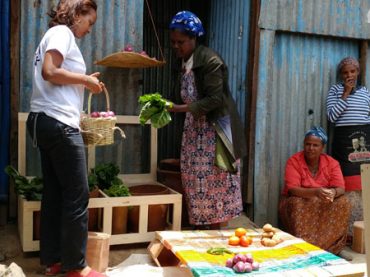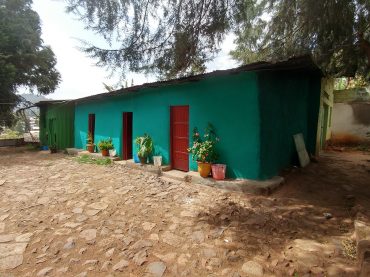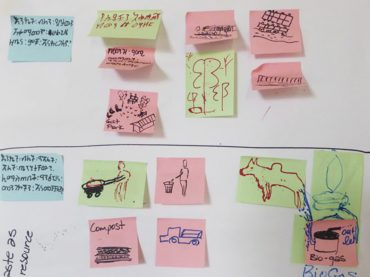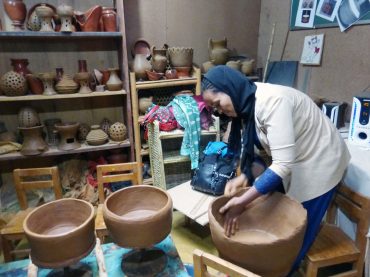Introduction
Out of the 50 people who were asked to participate in the survey, 35 answered all the questions. 20 were gulit vendors and 15 were buyers. . The survey was held in two woredas: 01, Rwanda market, Bole sub-city; and 08, Agoza market, Kirkos sub-city. The survey has included middle, lower, and higher income groups. Foreigners were also part of the survey. .Out of the vendors 12 were female and 8 were male. Out of the buyers 11 were female and 4 were male. In Agoza market they sell coal and different types of Spices whereas in Rwanda area they provide more vegetables and fruits.
Results of the survey suggest that answers are similar for both male and female. We will discuss in detail for vendors and buyers below.
Rwanda Market
Agoza Market
Vendors:
Gender: Data shows that most of the vendors are female. The two men that have been questioned are different from the others in regards to their quality of produce – which comes from the peripheries of Addis Ababa as opposed to the produce provided by the other female vendors who bring their product from either their neighborhood or the local wholesale market namely “Atakelt tera” located in the center of the city. These men are not only respected among their peers but are also innovative in the way they handle and store their fruits and vegetables.
Transport: Vendors sometimes share vehicles to transport their products, they also use manual labor. During transportation: they use different storage systems for the different types of vegetables; and are also very careful in the way they handle the products during transportation. Onion is the most profitable vegetable when tomato is second, potato third and cabbage fouth. Potatoes are easiest to transport when onions come in second, beet root in the third category, carrot on the fourth and cabbage on the fifth. Potatoes, onions,beet roots and spinach are the vegetables which tend to last for a longer period of time. Onions, tomatoes, cabbage, spinach, and salad leaves are in high demand, so they are given priority.
Profit, infrastructure, waste disposal systems: Gulit vendors pay their taxes once a year. Their profit fluctuates depending on the season. They have no consistent mode of transport although they contract vehicles or manual labour when needed. They share the cost for water, electricity, and toilet facilities In Agoza market there is: no road infrastructure leading from the market to the main road; no common waste disposal system which forces them to either throw away waste material in the river or give it to cattle. The Rwanda market is fairly accessible to the main road; there are also garbage disposers who come daily to dispose of the waste in the area.
Customer retention: To acquire and retain a customer, vendors try to: bring in the best quality of products with a lesser price, display them in an attractive way, are very friendly towards the customer and sometimes give credit to create a stronger bond with the buyer. They use different formal and informal systems to support eachother. The two informal associations: ‘Edir’ – an association established among neighbors or workers to raise funds that will be used during emergencies ; and ‘Iqub’- a neighborhood association established by a small group of people in order to provide substantial rotating funding for members in order to improve their lives and living conditions.
Common problems: Their common problems in the market include: cleanliness; lack of access and capacity to be fit for larger number of customers; and lack of appropriation in the zoning of the market stalls which sometimes brings about chaos in the same area.
Existing storage systems: There are various ways in handling of the produce. Most vendors buy in small amounts or buy the vegetables in a ripe state. They use water to store some vegetables and also quickly separate the rotten ones from the others as quickly as possible. These are the traditional systems they use. All vendors stated that these are the common ways they keep their produce.
New ideas: Even though most of the vendors have been working in this sector for the past 10 – 30 years, most of them have not attended proper education systems, and neither have they outlined their business plan. They are always in a state of competition where they have to strive daily for profit. The situation in the country does not help and they are always struggling to support their family through such systems. There is no government which has a big impact on the people as a whole.
The survey has discovered that the Rwanda area is more active relative to the Agoza market. The latter could learn a lot from the former, to create a similar synergy within the market. This could be a start of a conversation among markets within the city.
All questionnaire participants said that they would like the government to make positive change phase by phase in the above stated problems. They are also very much ready to be part of this change process and to support it as needed.
Buyers
Profile: Most answers to the first part of the questionnaire are similar. Most of the buyers buy for themselves, their family, and some for their business or the corporation they belong to. All interviewed buyers go to the Rwanda market to buy fresh fruits and vegetables. Some go there once a week, some daily and others every other day.
Reason to buy in a gulit: A lot of money is circulated within these markets. Some buyers buy in bulk whereas others buy in small amounts. Buyers like to go to their specific gulits because it is close to where they live or work. They frequent a specific vendor because of their: price, quality in produce and service.
Existing storage systems: Most buyers have fridge’s in their living quarters, if a fruit or vegetable becomes rotten, they throw it out along with the rest of their waste and don’t really think about saving any of it. They mentioned that they will start thinking about saving this waste for the next time. All buyers stated that the lack of cleanliness within the gulits is one of its major setbacks in the area. Otherwise all of them love the relationship they have with their buyers and the fact that it is close to their living or workplace. As to not have too many waste, buyers usually store their fruits and vegetables in an aerated area. They also cook their food in bulk as to use all the vegetables before it becomes rotten.



















